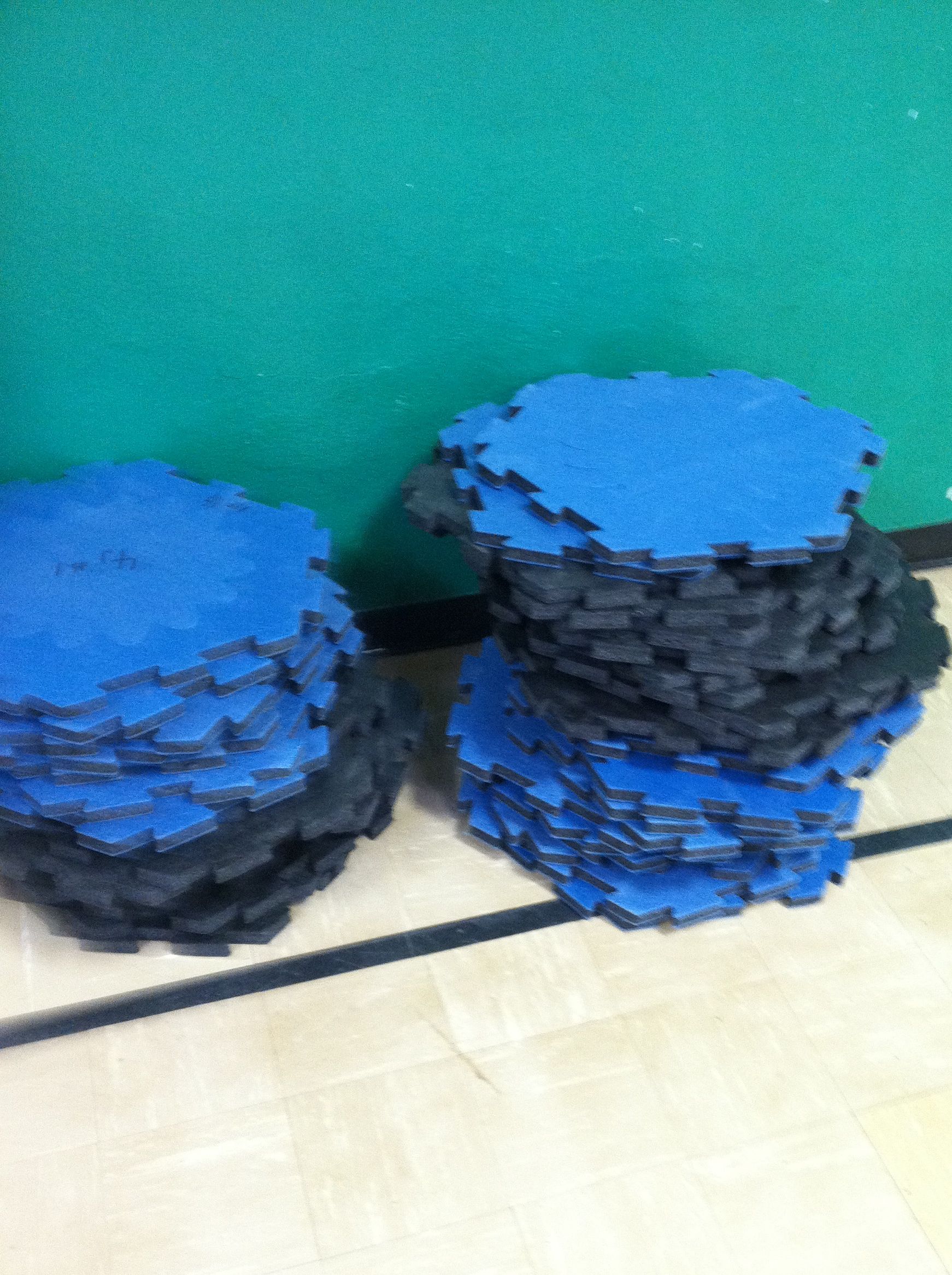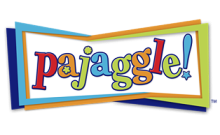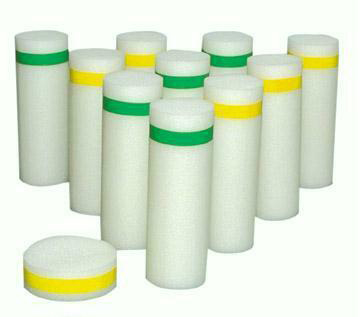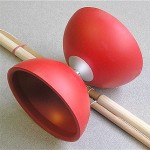- Hold up a Pajaggle (large foam puzzle piece) and show the students that the outside piece is the ring. Click Pajaggle for more information.
- The inside piece is the insert. If there is a still smaller insert, this is called a mini insert.
- Note: Use your hand only whenever you are removing an insert from a ring.
Activity: Team Pajaggle
- Distribute a class set of Pajaggles (Large foam puzzle pieces) at one end of the gym.
- Separate the rings and the inserts.
- Relay: Line up the classes in four equal lines at the opposite end.
- First person on each team gets ready to run.
Guidelines:
- On the teacher’s signal, students run to the end of the gym and pick up one ring.
- They run back to their line and give a high five to the next person in line.
- The second person in line will pick up an insert that they think matches the ring.
- If it fits, the next person in line runs down and gets a new ring.
- If the insert does not fit, the next person in line returns the insert and tries to find another one that fits.
- This continues all of the pieces are gone.
Game: Chasers and Puzzlers (This event is timed)
Setup and Equipment
- The class is divided in half.
- One half of the class are the chasers and the other half is the puzzlers.
- The puzzlers sit around the center circle in the gym.
- The pajaggles are set up at one end of the gym with the inserts taken out.
- The chasers line up their relay teams, so they can easily pass beside the puzzlers in the center of the gym.
Guidelines:
- On teacher’s signal, the chasers run one at a time to pick up one piece at a time and hand it off to the puzzlers.
- The puzzlers will begin to put the pajaggles together in one giant puzzle.
- Chasers continue running until all of the pieces are in the center of the gym.
- Puzzlers continue until the giant puzzle is put together.
- The teacher stops the time when everyone is sitting down and the puzzle is completed.
- For a Challenge: Classes may compete against each other, to see who has the lowest score






